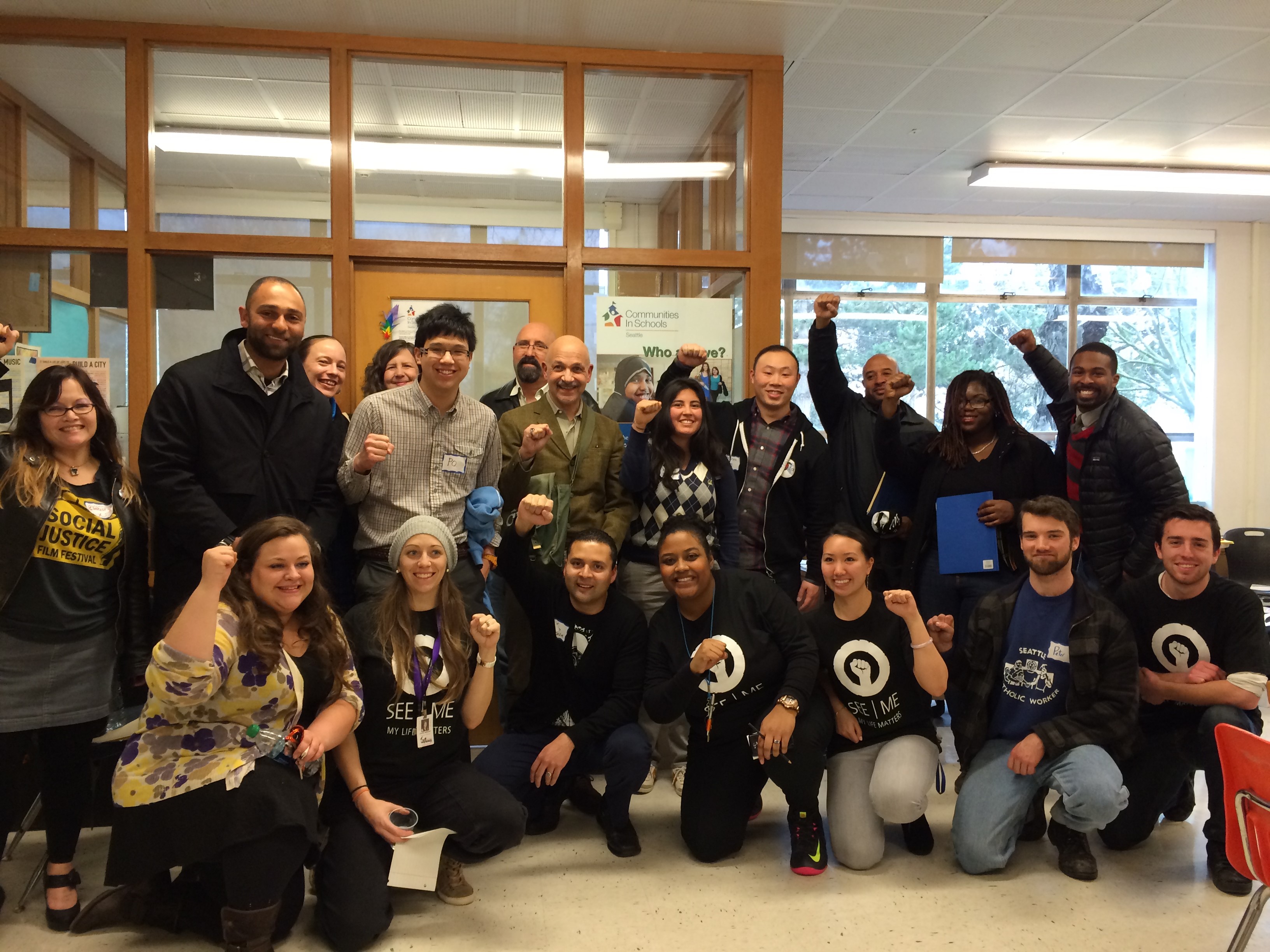- About Us
- Events & Training
- Professional Development
- Sponsorship
- Get Involved
- Resources
Ten Big Ideas: Building Leaders of Change for Equitable CitiesBy Jacqueline Reid, AICP and Sophie Glass
How can youth be involved in creating cities that are more socially just? Planners from the Puget Sound region had the chance to explore this question through a workshop hosted by Urban Impact Seattle and Rainer Beach High School as part of a Martin Luther King Junior Day celebration. Local planners rallied when the call went out from Urban Impact for workshop ideas for high school students. A flurry of emails, an impressive number of volunteers, and a few days of work to meet the submittal deadline, resulted in a winning workshop proposal. “See Me: My Life Matters Block Party (Building Leaders of Change)” workshop was held at Rainier Beach High School to raise awareness of social justice issues and honor the legacy of Dr. King. “Fostering Social Equity” from the Washington APA Chapter’s “Ten Big Ideas” provided the inspiration for developing the 50-minute workshop on the connections between social equity and urban planning. The Chapter’s “Kids in Planning” task force stepped up to develop the workshop proposal, coordinate the speakers and materials, and manage the welcomed enthusiasm of the local planners who wanted to participate
The workshop began with asking the students to imagine in their mind what they saw on their way to school. Students responded by referring to their bus stop, traffic, yard, sidewalk, apartment and office buildings. We then challenged the students to think about who makes the decisions about where their bus stops are located, how much traffic is tolerable, how tall buildings are allowed to be, etc. Presenters reinforced the message that cities are a result of a series of decisions made by urban planners and other policy makers. Moreover, youth have an important role to play in making those decisions to shape more equitable places to live. We included a hands on exercise called “What Matters to YOUth” where students were able to consider how community planning can impact social equity. The students worked collaboratively to identify community priorities that mattered to them that they would then share with an elected official. These issues included:
When delivering the workshop, the planners thought it would be great to make this something more than a classroom exercise. We decided that actually sharing the issues and ideas generated by youth in our community with the local elected officials would not only allow the ideas to be considered by those in seats of power, but also would demonstrate to our young workshop participants one way that they can engage with community leaders. With the Chapter President’s enthusiastic support, the students’ ideas were sent on Chapter letterhead to Mayor Ed Murray and all the City of Seattle councilmembers, and copied to the Rainier Beach High School teacher-liaison, to share with the workshop participants. This event was a tremendous opportunity to build bridges within the Chapter and with the community in South Seattle. Local planners were honored to be part of a workshop that fostered an awareness of urban social justice issues, while increasing students’ understanding of planning issues and the profession. We would like to thank Laura Wright, of Urban Impact Seattle, Katie Wallace our teacher-liaison at the school, and also Ivan Miller, AICP for his support of this event. There was a great energy and enthusiasm for delivering the event and the Chapter Kids in Planning Task Force would like to help in the delivery of similar classroom events. If you are interested in becoming a member of the Task Force, please contact [email protected], who co-chairs the Task Force with Steve Butler, FAICP, of the Task Force. As we are compiling an up-to-date list of Task Force members, please let Jacqueline know if you are a returning Task Force member. We are grateful that Paula Reeves, AICP, President Elect of the chapter, and former co-chair of the Task Force will continue to be an active supporter of work with youth, to engage them in planning.
|




